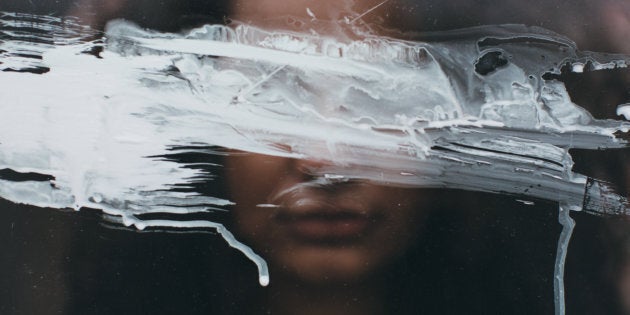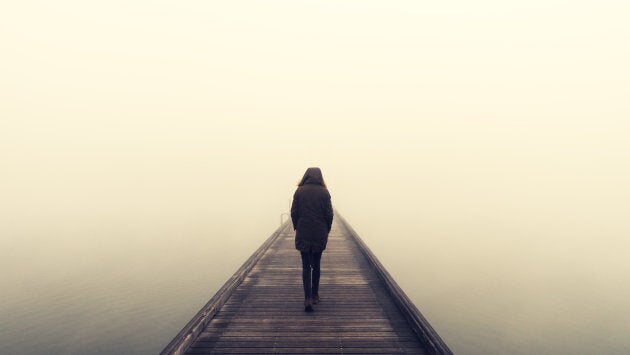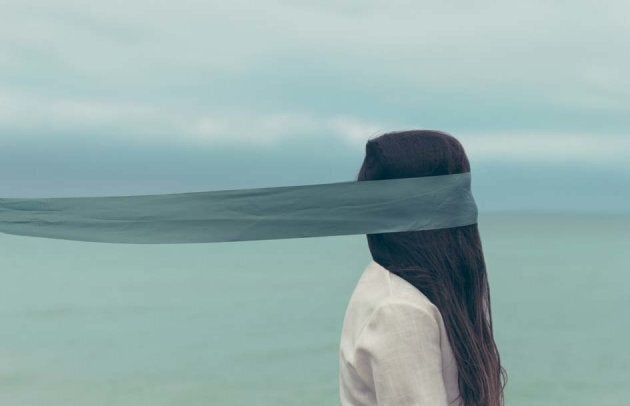
Mental health is an area that is finally getting some attention as a real and serious health issue, though we still have so far to go. Part of removing the stigma around mental health is understanding the various types of disorders people can be diagnosed with.
There are many disorders, both under the anxiety and depression categories, and many iterations of each.
"As with all disorders, whether they are depressive or anxiety related disorders, they have to display what we call 'functional impairment', which means that whatever the symptoms are, they must have some sort of negative impact on your life to be diagnosed with a disorder," Associate Professor Vijaya Manicavasagar from The Black Dog Institute told HuffPost Australia.
Here is a look at some of the types of both anxiety and depression and how they vary.
Anxiety
"The core of anxiety is a fear response -- it's part of people feeling some sort of fear," Manicavasagar said.
"There are various forms of anxiety in terms of disorders. Anxiety disorders are defined by a constellation of symptoms that are precipitated by certain cues."
Social Anxiety
"One of the more common anxiety disorders is social anxiety, or social phobia. That's a fear of being evaluated or judged negatively by others," Manicavasagar said.
People with social anxiety might avoid parties or worry about being in crowds.
"They will avoid speaking in public or speaking in groups, they can be very shy and they can have difficulty making friends. They are quite often fine on a one-to-one basis, but they get very anxious when they are around other people and have to speak up or stand out."
"The fear there is a fear of negative evaluation, they fear that people will judge them for what they are saying or judge them because they will notice that they are anxious or maybe turning red, or sweating or stammering," Manicavasagar said.
Panic Disorder
"Another very common form of anxiety is a panic disorder," Manicavasagar said.
This disorder comes from a fear of having a panic attack.
"It's thought that a third of university students have experienced a panic attack, so it's not at all unusual or rare. A panic disorder occurs when people have suffered from a panic attack, and then go on to become fearful of having a panic attack again.
"What happens is they then become very sensitised to normal body sensations, such as perspiration on a hot day. That may be interpreted as an attack coming on, and simply from anticipating a panic attack, it can raise anxiety levels and then a panic attack may occur."
Generalised Anxiety Disorder
"Generalised Anxiety Disorder is one of the more loosely defined disorders. It's characterised by catastrophic worry about two or more areas of your life."
Generalised Anxiety Disorder is very broad and in some cases not taken as seriously as it should be.
"It's a loose category because when you say two or more categories in your life, it comes down to how related or far apart those two related areas are. Someone might be worried about their relationship or marriage, as well as their finances, for example.
"The worry needs to occur for a six month period or more. The kind of worry that comes along with GAD can be quite incapacitating, to the point where people are paralyzed with anxiety or do irrational things due to their worry," Manicavasagar said.
Separation Anxiety
"My special interest is in separation anxiety, which has a very high rate of prevalence," Manicavasagar said.
"About 7 percent of the population have suffered separation anxiety. It can be brought on by being separated from a loved one -- it could be a detachment figure, it could be a parent, or children -- I've seen mums who are very very anxious about being away from their kids."
Not just about people, being away from a loved animal can be the cause of separation anxiety, too.
"People can even have separation anxiety towards pets. If you're unable to travel because you're worrying about your pet then obviously it's an impairment. Separation anxiety is a new one that is not so well known because prior to that people with it were lumped under the panic disorder diagnosis because it can also involve panic attacks. Quite often it was misdiagnosed," Manicavasagar said.

Sadly, but understandably, a lot of people with anxiety will use drugs or alcohol as a means to feel some relief.
"Quite often, with all the anxiety disorders, people can have a propensity to resort to alcohol or certain medications to try and help control their anxiety. A lot of people with social anxiety will drink before they go to go into a social situation because it can get alleviated by alcohol. But obviously that's not a good way of coping."
Depression
As with anxiety, there are many forms of depressive disorders. These disorders can either stem from biology or circumstance (or both).
"Depression itself is called 'unipolar'. It's recognised that there are biological types of depression that some people suffer from, and then there is a whole bunch of other types of depression that are not driven by biological factors, and then there's another bunch that's the mixture of the two."
For that reason, depression is a little harder to put into groups.
"Anxiety tends to be a little more categorised, because what people fear can be conceptualised quite clearly, whereas with depression the edges are a little more blurred. Generally speaking, the biological depressions are the ones that are initiated and maintained by imbalances of neurotransmitters in the brain. That's where the serotonin, dopamine and noradrenaline systems come in," Manicavasagar said.
"In these cases there are some problems in the ways neurotransmitters are metabolised in the brain and they lead to people feeling unmotivated and displaying some depressive symptoms. Quite often these types of depressions have a strong familier basis, so they run in families, basically.
"Then you have a whole bunch of other types of depressions and they are more driven by circumstance. Say someone breaks up with their partner, it's not uncommon for someone to then develop a depression because they are very unhappy and sad. Or if someone is going through financial difficulty, or any type of difficulty or life stress, it can trigger off a depressive episode.
"Those types of depressions, if they develop and go on for long enough, and if the person's behavior results in them to withdraw from their friends and family -- the don't socialise, they don't look after themselves -- everything compounds and then that can develop into a biological type of depression in some cases, which can go on for a long time if untreated."
This is where the the topic of suicide enters the picture.
"Depending on the depression and how severe it is, suicidal thoughts can be part of the depressive picture," Manicavasagar said.
"Because, as anxiety is characterised by fear, depression is characterised by hopelessness. It's about worthlessness and a feeling of nothingness. Everything seems so bleak and hopeless, so sometimes suicide seems like the next step."
Seasonal Affective Disorder
"There are some forms of depression that are a combination of biological and circumstance. For example seasonal affective disorder, which is a chemical-driven type of depression but it's also situation-specific because it is dependent on the seasons. It's more prevalent in the northern hemisphere but it's not uncommon for people in Australia to have it if they stay in doors and aren't getting enough sunlight," Manicavasagar said.
Postnatal Depression
Postnatal depression, which can occur to a woman after she's had a baby (or during, which is called antepartum depression) is also a combination.
"Postnatal depression is another example of the two combined, being both biological and environmental. These women have had a baby and have a lot of challenges ahead, but they also have a whole host of hormones circulating."
Bipolar
"Bipolar used to be called manic depression. The name was changed because manic depression sounded very pejorative. Mania had a very negative connotation, so now it's called bipolar. Bipolar disorder is characterised by mood swings where people go from one mood to the other. There are two types of bipolar -- there's bipolar 1 and bipolar 2," Manicavasagar said.
"Bipolar 1 is where people, in either the high or the low, become psychotic. This means they have a break with reality, and it is quite dangerous. They can put themselves at harm because, for example, they might seriously believe they have superpowers and walk out of a window. They may believe grandiose things when they are in the manic stage, and when they are depressed they may become extraordinarily suicidal."
Bipolar 2 is characterised by less extreme highs than bipolar 1 and is more common in women.
Psychotic depression
Psychotic depression is categorised by people having delusions. People may imagine someone is out to get them, or that they owe large sums of money, when in fact it is not the case.
"It's very rare for people with depression to have hallucinations, but they will have delusions. People with psychotic depression usually have delusions about about something negative, and again, they may feel like they deserve to be punished. It's all about punishment because these people feel worthless," Manicavasagar said.
Obsessive Compulsive Disorder
"Obsessive compulsive disorder is a difficult one," Manicavasagar said.
"OCD, in all of the revisions of the definitions except the current one, was actually in the anxiety disorder section. It has now been moved, and it never really sat very well in either anxiety or depression."
"OCD is characterised by people either having obsessions, compulsions, and/or both. Obsessions are when thoughts go around and around in your mind where you worry something bad is going to happen, or that you have to do certain things to stop that bad thing from happening. Whereas compulsions are the acts of doing those things repeatedly to offset something bad happening," Manicavasagar said.
"The reason why it doesn't sit very well with the anxiety disorders is that most people with anxiety have insight that how they are feeling is not normal, whereas with OCD, some people don't always feel that way -- they feel like they have to do what they do. It's not quite delusional, but they really believe it."
OCD quite often is characterised by depression as well.
"This is one of the controversies about it and why it has been debated as to where it sits, because it is often accompanied by depression, whereas you can have a pure anxiety disorder without depression. With OCD, symptoms tend to vary depending on the severity of the depression. The more depressed you get, sometimes the OCD will parallel that," Manicavasagar said.

These disorders are only some of the diagnoses within the mental health sphere, and there are many others. If you feel you might need some help, speak up. Talk to a trusted friend or loved one, or your doctor if you feel comfortable.
"If you can, go and see your GP. But of course that's a big call for a lot of people. Many people won't go and see their GP for emotional problems, but that would be the best option because the GP is more or less the gatekeeper of treatments that may be available. GPs also have access to a lot of online programs and other resources that are very helpful."
"For example, the clinical research unit for anxiety disorders at St Vincent's Hospital has a great program called This Way Up, and Macquarie University runs another online program called Mindspot. Both of these are CBT [cognitive behavioral therapy] based, so they will assess the severity of your symptoms so if your symptoms are really bad they will suggest you see a doctor," Manicavasagar said.
Lifeline is exploring Australia's suicide emergency with business and community leaders. The #StopSuicideSummit was held on May 1 in partnership with HuffPost Australia and Twitter.
If you need help in a crisis, call Lifeline on 13 11 14. For further information about depression contact beyondblue on 1300224636 or talk to your GP, local health professional or someone you trust.